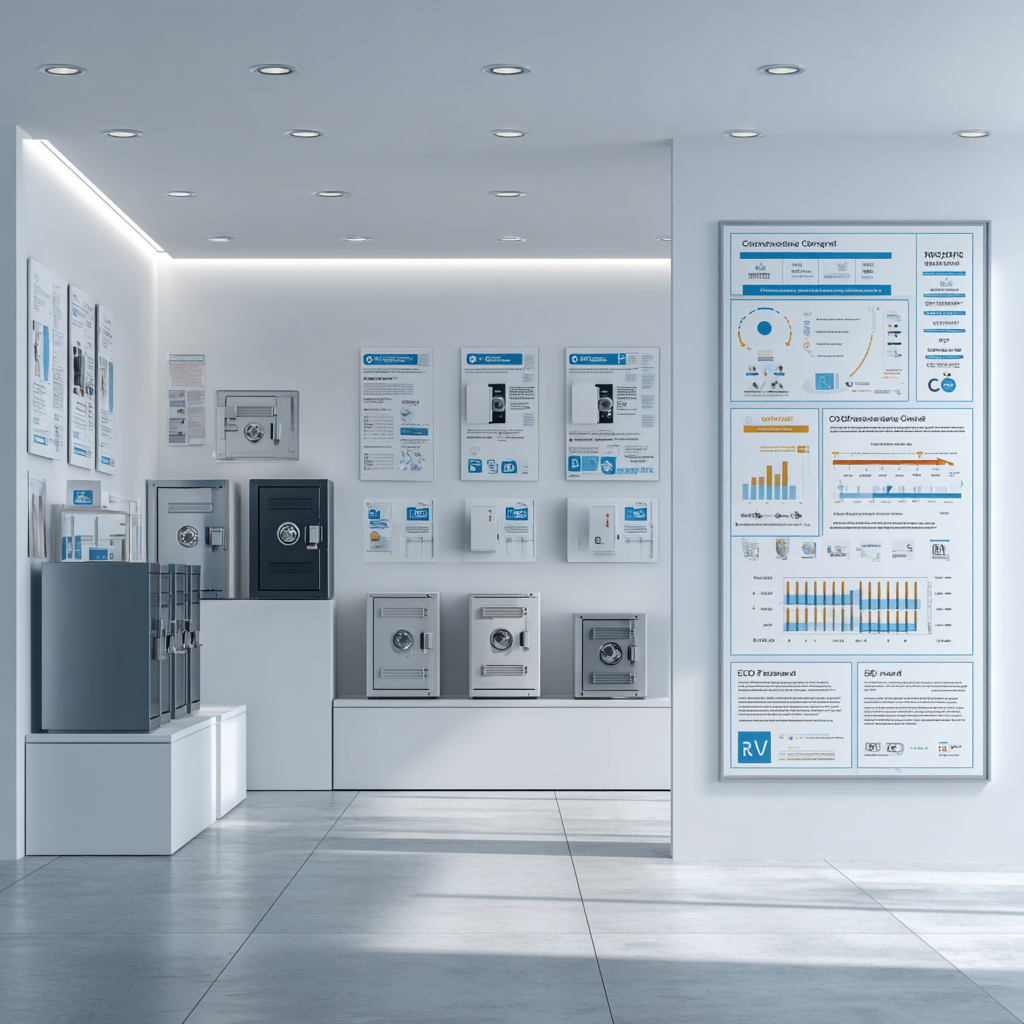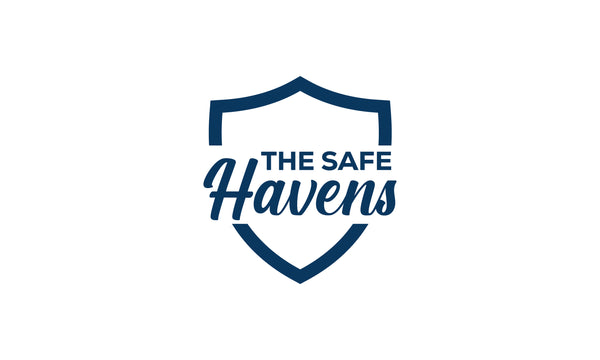
European Safe Ratings Explained: What Do EN Standards Mean?
In an era where security and resilience have become non-negotiable priorities for homeowners and businesses alike, understanding European Norm (EN) standards for safes is of paramount importance. The United Kingdom—despite having its own robust certification systems—recognises and widely adopts EN benchmarks established by the European Committee for Standardization (CEN). These standards, implemented by national bodies such as the British Standards Institution (BSI), provide a transparent, independently verified framework that measures a safe’s ability to withstand attacks, resist fire, and protect valuable contents. For any organisation or individual seeking to invest in a safe, comprehending EN classifications is critical not only for meeting insurance and legal requirements but also for ensuring the appropriate level of security based on specific risks.
Origins and Purpose of EN Standards
European Norms emerged after World War II with the formation of CEN, aimed at harmonising technical standards across member states to facilitate trade and guarantee product reliability. Regarding security safes, CEN’s Technical Committee TC 275 defined rigorous test methods reflecting real-world threats from burglary tools and structural fires. National bodies then adopted these EN specifications, embedding them into local regulations and insurance protocols. In the UK, BSI provides oversight, testing and certification based on these EN documents, which allows buyers to compare products on an equal footing even when sourced from different manufacturers across Europe.
The overarching objectives of EN standards include establishing minimum performance criteria, promoting consistency in testing procedures, and ensuring that users can make informed decisions. Before EN standards, diverse national benchmarks led to discrepancies in confidence and confusion among buyers. With unified EN metrics, each safe’s burglary resistance or fire resistance rating corresponds to a defined set of test scenarios, equipment, and performance thresholds.
Key EN Standards for Safes
EN 1143-1: Burglary Resistance for Safes, Strongrooms and Vaults
EN 1143-1 is the cornerstone for grading high-security safes. Through standardized laboratory tests conducted by accredited test houses, safes are subjected to attempts at forced entry using an escalating series of tools and techniques. These range from simple hand tools—hammers and chisels—to powered implements like drills, grinders and cutting torches. The progression of tools reflects the tactics employed by opportunistic burglars first and more determined, professional criminals thereafter.
Products are assigned grades from I through XII, each representing a level of resistance. A Grade I safe must endure a three-minute attack using basic tools before any breach occurs, whilst Grade IV safes withstand fifteen-minute assaults combining manual and power tools. By the time one reaches Grade XII, the safe is expected to repel highly sophisticated methods—including diamond-tipped cutting discs—for extended durations, often upwards of sixty minutes. Businesses with large cash holdings, precious metals, or high-value stock typically require safes rated Grade III or Grade IV. Conversely, national institutions, high-security vaults and armoured installations might demand Grade VIII or higher.
The full specification of EN 1143-1 can be viewed on the CEN website (EN 1143-1: Burglary Resistance for Safes) and purchased via BSI’s online shop BS EN 1143-1.
EN 15659: Fire Resistance for Data and Documents
Alongside physical attack, fire poses a significant threat to safekeeping. EN 15659 details the thermal performance of safes under controlled fire exposure. Two principal classifications exist: document safes, rated S 60 P or S 120 P, and data media safes, rated S 60 DIS or S 120 DIS.
Document safes undergo a fire endurance test whereby the external furnace temperature cycles through rapid heating to 750 °C and maintains it for either sixty or 120 minutes. Internal thermocouples record the safe’s interior conditions, ensuring temperatures remain below 150 °C to prevent paper ignition or damage. The suffix “P” denotes protection of paper-based content.
Data media safes experience a similar fire regime, but with more stringent internal criteria. For a safe to earn the DIS (data) rating, interior temperatures must not exceed 50 °C, and relative humidity must stay under 85 percent. This combination protects magnetic tapes, optical discs, hard drives, USB devices and other electronic media, whose data integrity is compromised by heat and moisture.
The test standard EN 15659 is available from CEN (EN 15659: Fire Safes) and through the BSI shop BS EN 15659.
EN 14450: Secure Light Safes
Recognising the need for light-duty protection in domestic or low-risk commercial contexts, CEN defined EN 14450. This standard establishes two classes—S1 and S2—for smaller safes weighing under 100 kilograms and primarily resisting hand-tool attacks. Class S1 safes hold against basic manual tools, while S2 models endure more vigorous efforts for a longer duration.
These models are particularly popular in private homes where residents wish to protect passports, small quantities of cash, sentimental jewellery, or personal electronics without investing in heavier vault-grade units. The lighter footprint, user-friendly design, and competitive pricing make EN 14450 safes a sensible option for many.
The official specification can be consulted via CEN’s portal: EN 14450: Secure Light Safes.
Practical Implications for Buyers in the UK
Matching Risk to Rating
Selecting a safe begins with a rigorous risk assessment. Owners must evaluate what they intend to store—cash, documents, digital backups, jewellery, firearms—and determine the corresponding level of protection required. Insurance companies often stipulate minimum EN requirements; for example, to insure cash holdings above £10 000, a safe may need an EN 1143-1 Grade III certification. Businesses with high-value stock or jewellery lines may require Grade IV or V safes. Meanwhile, home offices protecting wills, deeds, and photographs may find an EN 14450 S2 safe with integrated fire resistance adequate.
Verifying Certification
Buyers should insist on viewing the EN certification label affixed inside the safe door and obtain copies of official test certificates from manufacturers or suppliers. Accredited certification ensures the product underwent proper testing under controlled conditions and achieved the declared rating. Buyers must beware of counterfeit labels or misleading marketing. Genuine EN-certified safes list the testing laboratory, test report number and the standard’s reference code.
Installation and Anchoring
EN tests assume safes are fixed in place. A Grade III safe loosely placed in a corner performs significantly worse than one anchored to floor or wall as per the manufacturer’s recommendations. Professional installation guarantees that anchor bolts penetrate solid masonry or reinforced concrete, ensuring the safe’s rated performance in real-world settings. Many insurance policies require installation by accredited technicians certified under the Secured by Design initiative Secured by Design.
Insurance and Compliance
Underwriters refer to EN ratings when drafting policy terms. A solicitor’s office securing client files may require safes that combine both EN 1143-1 Grade I burglary resistance and EN 15659 S 60 P fire protection. Failure to meet these standards can result in partial or full denial of claims in the event of theft or fire. Conversely, exceeding basic requirements can earn premium discounts or lower deductibles. Effective risk management dictates aligning safe selection with policy stipulations and documenting compliance meticulously.
Market Trends and Innovations
The safe industry continually evolves. Recent developments include composite materials integrating ceramic inserts for lightweight fire resilience, advanced digital locking systems with remote audit capabilities, and hybrid safes combining burglary and fire ratings in a single unit. Manufacturers now embed sensors that alert owners via smartphone if an unauthorized access attempt or environmental hazard arises.
Another trend is modular vault rooms—constructed from prefabricated panels rated to EN 1143-1 Grade VI or higher—offering scalable, high-security spaces within commercial premises. These vaults can be customised with internal shelving, lighting and access controls, catering to dynamic needs such as expanding retail operations or secure archival facilities.
Case Studies: EN Standards in Action
A mid-sized jewellery retailer in central London faced rising insurance premiums due to inadequate security. After a loss prevention audit, they invested in an EN 1143-1 Grade IV safe, professionally installed within a back-office strongroom. The upgrade satisfied insurer requirements, reducing annual premiums by 18 percent and delivering peace of mind following a neighbour’s high-profile burglary.
Similarly, a legal firm in Manchester sought to secure both physical and digital client archives. They selected a dual-certified safe featuring EN 1143-1 Grade II burglary resistance and EN 15659 S 60 DIS fire protection. This integrated approach enabled onsite access to vital records while maintaining compliance with data preservation standards.
International Perspectives
Although EN standards originated in Europe, their rigorous methodology has earned global recognition. In the Middle East, where asset security demands are elevated, EN-rated safes are often preferred over local benchmarks. Multinational firms in the Asia-Pacific region also adopt EN-certified vaults to ensure uniform compliance across disparate jurisdictions, simplifying procurement and meeting corporate governance requirements.
Future Directions
As threats evolve, so will EN standards. Upcoming revisions may simulate cyber-physical attacks—testing safes against electromagnetic interference, network hacking of digital locks, and remote override attempts. Sustainability concerns are also prompting discussions of recycled materials and energy-efficient production in future EN guidance.
Conclusion
European Norm standards offer a transparent, reliable compass for navigating the complex world of physical and fire security. By aligning risk assessments with appropriate EN classifications—whether protecting cash reserves, digital archives, or priceless heirlooms—UK buyers gain confidence that their chosen safe has been independently tested to meet exacting criteria. Verifying certification, securing professional installation, and integrating these measures with broader insurance and compliance frameworks completes a robust security strategy. In a world where threats continually morph, EN standards stand as an enduring benchmark, transforming abstract ratings into concrete protection for homes and businesses alike.
